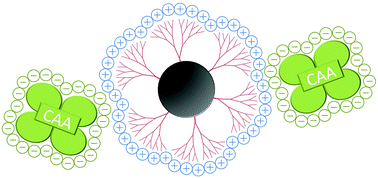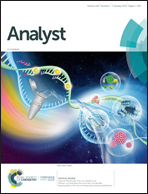Poly(amidoamine)-coated magnetic particles for enhanced detection of Schistosoma circulating anodic antigen in endemic urine samples
Abstract
Accurate and sensitive point-of-care diagnostic tools are critical for schistosomiasis control and elimination. The existing ultrasensitive lateral flow assay for the detection of Schistosoma circulating anodic antigen (CAA) has demonstrated excellent sensitivity but is time-consuming and requires significant laboratory infrastructure that limits its applicability at the point of care. To address this challenge, we sought to develop an alternative sample preparation method to concentrate CAA from large-volume urine samples requiring little-to-no laboratory equipment. The developed method relies on electrostatic interactions between the negatively-charged CAA biomarker and positively-charged poly(amidoamine) (PAMAM) dendrimers functionalized to the surface of magnetic particles. After CAA capture on the surface of the PAMAM-functionalized magnetic beads, the supernatant was removed, and CAA was eluted into a small-volume, high-salt elution buffer. This concentrated eluate was subsequently applied to the existing lateral flow assay. The PAMAM-functionalized magnetic bead-based CAA concentration method was extensively characterized for its robustness, evaluated on a set of endemic urine samples, and compared to spin filter-based concentration methods. The novel bead-based sample preparation method used only disposable laboratory materials, resulted in a 200-fold improvement in CAA limits of detection, and performed just as well as infrastructure-intensive and high-cost spin filter methods. Additionally, the functionalized beads were robust to variations in sample pH and storage conditions. The PAMAM-functionalized magnetic bead-based CAA concentration method represents a promising step toward ultrasensitive schistosomiasis diagnosis at the point of care.

- This article is part of the themed collection: Analyst Recent Open Access Articles


 Please wait while we load your content...
Please wait while we load your content...